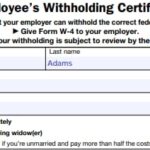
Construction companies and home builders would naturally gravitate to a job costing approach. Materials and labor can be readily traced to each job, and the cost assignment logically follows. Next, you’ll refer to your operating budget so that you have the necessary direct materials, direct labor, and overhead cost information available. This is the information that you’ll plug into your job order costing software in order to get accurate costs. Commonly, the overhead rate may be derived by applying overhead costs on the basis of labor hours or machine hours. This means that the company uses labor hours or machine hours (i.e., the primary cost driver) to reasonably estimate manufacturing overhead costs.
- Scrapped units are instances where a piece of Direct Material is damaged or otherwise rendered unusable during the manufacturing process.
- The job cost sheet is where everything you’ve entered so far gets pulled together.
- This means that the company would estimate $6 in manufacturing overhead costs for every one machine hour worked ($450,000 divided by 75,000 machine hours).
- Needless to say, if your business is a service-oriented one, then the Materials Requisition Form would not be applicable.
When a customer request comes in, the company estimates the hours that the order might incur for each activity pool to provide a quote. Direct labor costs include the salaries of those employees that are directly involved in the manufacturing of the products, including line workers, welders, painters, machine operators, etc. A company can use both job order costing and process costing.
Direct Material Cost Breakdown
This chapter, and the next, will provide a sense of how business information systems are used to generate these important cost data. This chapter focuses on the job costing technique, and the next chapter will look more closely at process costing and other options. This rate is used to charge the factory overhead to the jobs worked on during the month. The number of direct labor hours used on the jobs is the basis of such allocation. A job order costing system can help you gain control over your financial assets such as invoices, material costs, payroll, etc. It helps your accountant to calculate the data or track any important information using those assets.

Direct materials are debited into the Work In Process inventory account and indirect materials are debited to the Manufacturing Overhead account. Over time, a job order costing system becomes a valuable database holding the details and costs of doing jobs. The information that is stored can be used as empirical data to help the company evaluate its own efficiency and reduce costs by changing its procedures, methods, or staffing. Jack figures that his four electricians will work a total of about 7,500 direct labor hours during the year. By comparing these two numbers ($150,000 and 7,500 hours), it is now possible to “model” that overhead is $20 per direct labor hour.
CHEGG PRODUCTS AND SERVICES
The entry to record the indirect material is to debit manufacturing overhead and credit raw materials inventory. As you learned previously, direct materials are the components that can be directly traced to the products produced, whereas direct labor is the labor cost that can be directly traced to the products produced. In order to calculate accurately, we will need materials, direct labor, and factory overhead costs. Due to the need for immediate access to job costs, many companies use a predetermined, or budgeted, manufacturing overhead rate to estimate manufacturing overhead costs. Job costing (also called job order costing) is best suited to those situations where goods and services are produced upon receipt of a customer order, according to customer specifications, or in separate batches. For example, a ship builder would likely accumulate costs for each ship produced.
Since each coffee mug goes through the same manufacturing process, the firm will use a process costing system. The estimated manufacturing overhead value can be compared to the actual manufacturing overhead value in a separate manufacturing T-account to determine any significant differences. The manufacturing process has two departments—fabrication and finishing. In the fabrication department, laborers pour composite materials into custom carved molds.
Now, when a customer order comes in, the company would be able to roughly estimate the number of direct labor hours that will be spent on manufacturing the goods, and multiply the hours with the overhead rate. While direct labor and material costs can be tracked quite easily, manufacturing overhead is another thing completely. As everything above is involved in the production of every product, the overhead needs to be allocated to each product separately.
What are the elements of cost?
It would be difficult, and not cost effective, to track the cost of each individual clothing item; rather, it is more efficient to track the costs in each phase of the clothing-making process. Levi’s can then accumulate the costs of the phases of production to determine the total cost of production for a batch and allocate those costs over the number of pairs of jeans made. This process allows them to determine the cost of each item. Cincy Chips produces microchips for small electronic devices. The predetermined manufacturing overhead rate is $95 per machine hour. Production used $13,500 of direct material and worked 21 direct labor hours at a rate of $20 per hour.
This helps determine the amount of overhead allocated to each asset and distribute it fairly between the company’s jobs. If your company sold the same product to every customer, you would only need to do this once since your costs would be the same for each item. Because your company provides a unique product or service to each customer, however, you need to complete this process for each order.
A basic flaw in the federal pay system – GovExec.com
A basic flaw in the federal pay system.
Posted: Tue, 01 Aug 2023 10:00:00 GMT [source]
The flow of goods through production is more evident in Figure 4.3, which depicts Dinosaur Vinyl as a simple factory with three stages of production. The production department employees work on the sign and send it over to the finishing/assembly department when they have completed their portion of the job. The flow of goods through production is more evident in Figure 8.2, which depicts Dinosaur sales journal Vinyl as a simple factory with three stages of production. Scrapped units are instances where a piece of Direct Material is damaged or otherwise rendered unusable during the manufacturing process. You want to capture this cost because you have to ultimately make enough money to cover mistakes like these. Hours doesn’t just include the time you’re working specifically on that job.
Why Is Accurate Job Costing Important?
These include expenses like design costs, tool maintenance and purchasing equipment that is directly used to manufacture the product. They’re listed under the COGS (Cost of Goods Sold) section in the income statement. To flesh out the steps above, here is an example of what job order costing would look like if you were running a custom t-shirt company. Pet Smart, H&R Block, Chili’s, and Marshalls are popular chains often found at the same shopping center, even though they are very different businesses. Although they have a retail store, the Pet Smart Corporation also manufactures large volumes of its own products, whereas H&R Block prepares taxes for individual customers. Chili’s prepares food, and its wait staff provides a service, whereas Marshalls sells a variety of products at retail.
It simply graphs out, by day, the amount of cost incurred for direct materials, direct labor, and overhead. In a sense, it is just a representation of the job cost sheet. Contractors are a good example of the type of business that would typically use a job order costing system. Both of these types of businesses offer products and services that are unique to individual customers. Because every job has different requirements in terms of material, labor, and overhead. Examples include home builders who design specific houses for each customer and accumulate the costs separately for each job, and caterers who accumulate the costs of each banquet separately.
For example, a prefabricated staircase manufacturer makes standard stairs and custom stairs. The standard stairs are all identical and follow the same process. The firm decides to use process costing for the standard stairs. However, each custom staircase is measured and custom made. The company decides to use job order costing for all custom stairs.
Creating an effective job order system requires multiple components to make sure all the calculations are up to the point. Job costing order is all about the direct labor, direct materials, and manufacturing overhead for that particular job. Companies that mass produce a product or offer the same service to all customers will use a process costing system. Companies that custom make products or offer tailored services will use a job order costing system. When overhead is underapplied, manufacturing overhead costs have been understated and upward adjustments need to be made to inventory and/or expense accounts, depending on which method the company decides to use.
The design department uses direct labor to create the design specifications, and, when completed, it sends them to the production department. The production department uses the material and design specifications and adds additional labor to create the sign. The sign is transferred to the finishing department for final materials and labor, before the sign is installed or delivered to the customer. For example, assume that a homeowner wants to have a custom deck added to her home. Also assume that in order to fit her lot’s topography and her anticipated uses for the addition, she needs a uniquely designed deck. Her contractor will design the deck, price the necessary components (in this case, the direct materials, direct labor, and overhead), and construct it.
This form provides essential documentation to track inventory. It also reveals that the “direct material” for the billboard task (Job A) was $150 (the light bulb). The wire nuts and tape that might have been used on the billboard will be dealt with as overhead, which is discussed later. A grocery store’s analysis of a recent customer survey finds an increasing number of customers interested in being able to custom-order meals to go.
The firm uses what is called a job order cost sheet to track direct materials, direct labor, and cost driver activity for each staircase manufactured. From the measurements, the firm knows exactly how much direct material, or wood, is needed. Also, the production workers track the time it takes to build each staircase, so direct labor is accounted for. Manufacturing overhead is allocated based on the cost driver direct labor hours.

